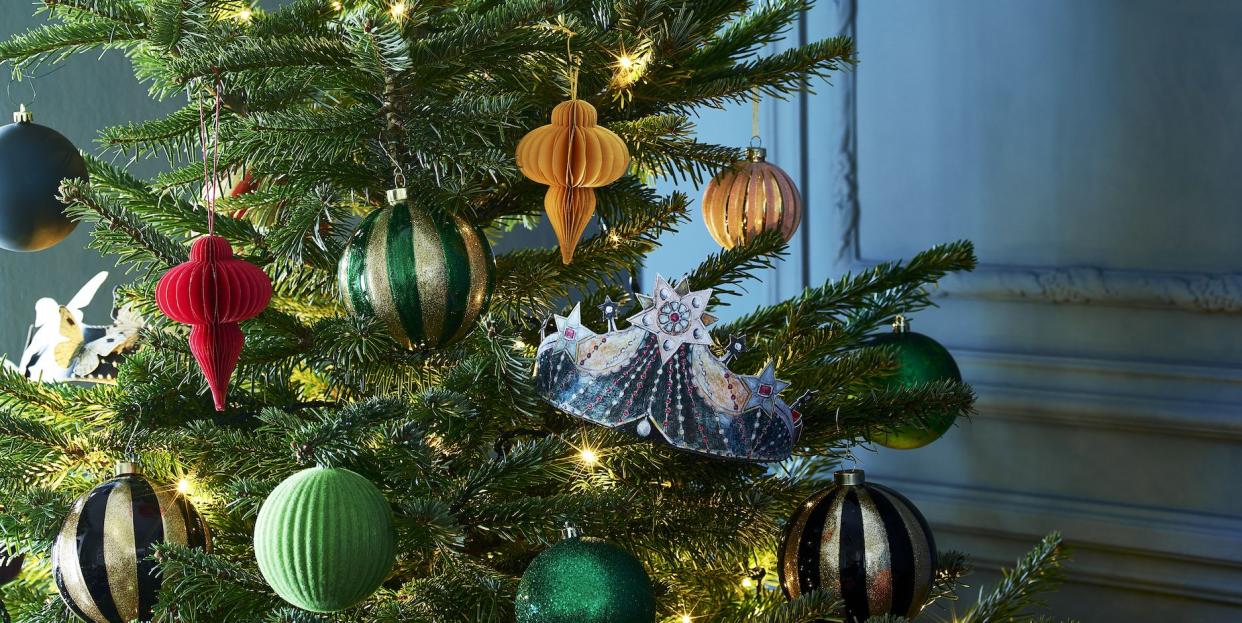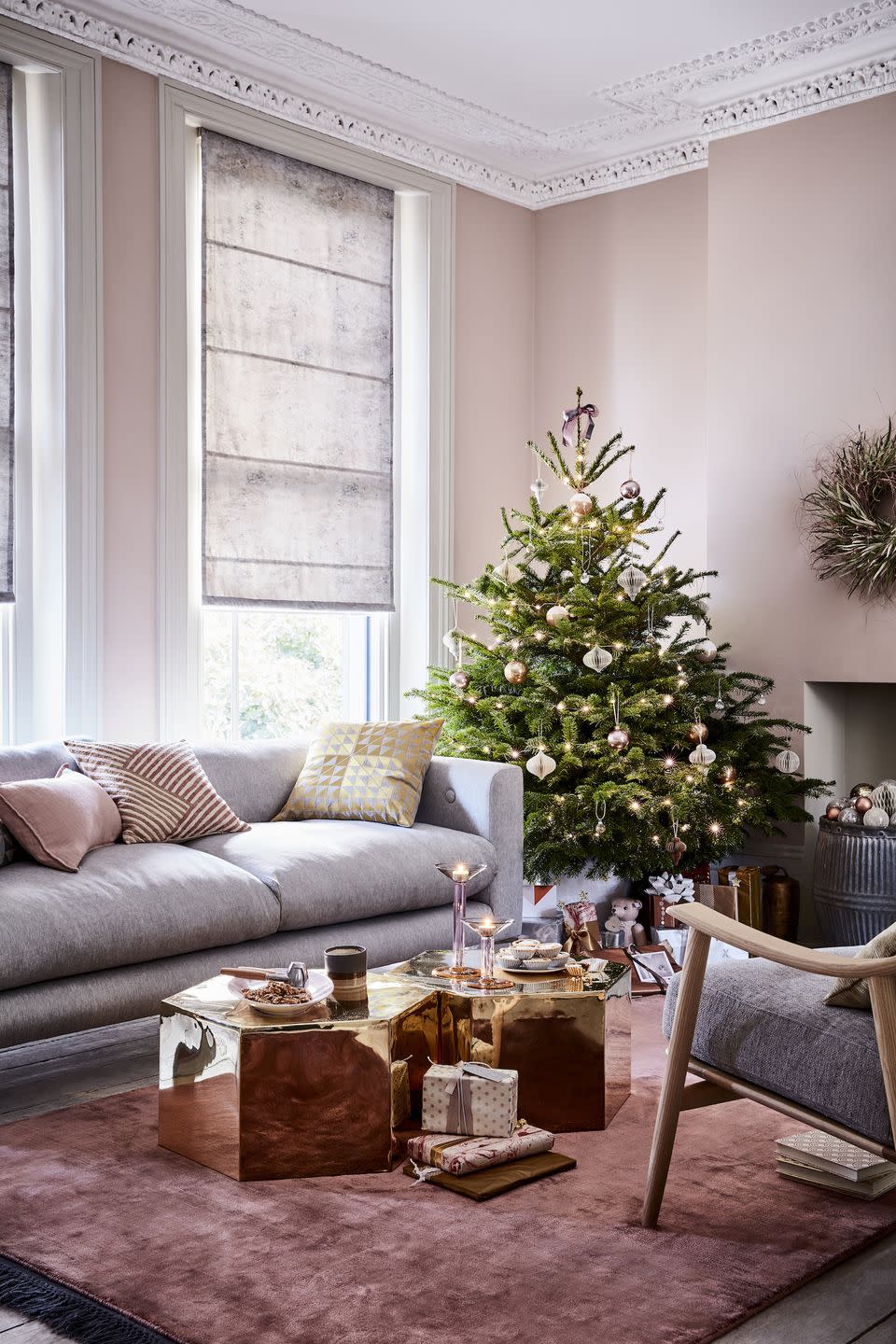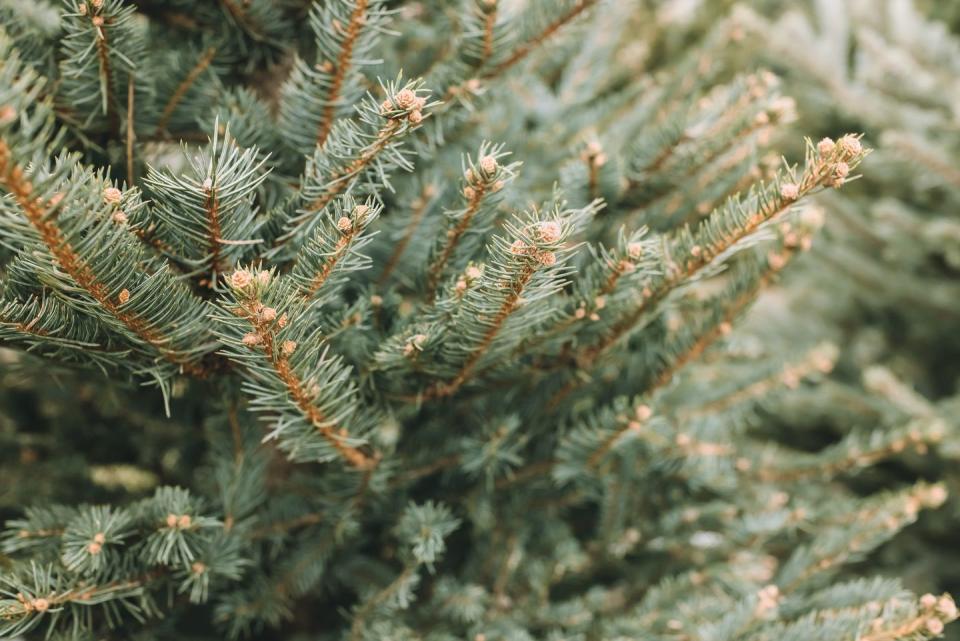Why do we have Christmas trees? Here's everything you need to know

For decades, many of us have been decorating Christmas trees in our homes with baubles, lights and lovely ornaments. But why do we have Christmas trees? And where does this tradition originate from?
Why do we have Christmas trees?
Bringing evergreen trees indoors has traditionally been used to celebrate winter festivals — both by Pagans and Christians — for thousands of years. Pagans would decorate their homes during the winter solstice with tree branches, as a symbol of spring that was just around the corner.
Fir trees were also used by the Romans to decorate their temples at the festival of Saturnalia, while Christians used it as a sign of everlasting life with God. In Christianity, the Christmas tree represents Christ's birth and resurrection. Many believe the branches and bushes signify Christ's crown of thorns on the cross.
Germany is also heavily credited with starting the Christmas tree tradition, as many Christians began decorating trees brought in from outside. Those who didn't have trees — or couldn't afford them — would make clever alternatives using wooden pyramids instead.
Some of the first Christmas trees in Germany were decorated with delicious edible decorations, such as gingerbread men and gold-covered apples (glass makers would also hang special small ornaments they had crafted themselves).
Who first brought a Christmas tree into the home?
The 16th-century preacher, Martin Luther, was recorded as one of the first people to bring a Christmas tree into his home – and one of the first to add lights on the tree, too.
According to tradition, one night before Christmas, Martin was seen walking through the forest and looked up to see the brightly shining stars glistening through the tree branches.
To recapture this scene for his family, he placed a tree in his living room and wired its branches with beautiful lights.

When did the Christmas tree first come to England?
While Queen Victoria and Prince Albert are said to be the ones who made Christmas trees popular in England, the credit goes to King George III's wife, Queen Charlotte.
In December 1800, Queen Charlotte set up a yew tree in the middle of the drawing room at the Queen’s Lodge in Windsor for a large party for children of the rich and noble. The tree was decorated with baubles, fruit, toys and small wax candles. The spectacular sight delighted guests and from there on, having a tree became popular, although exclusively among rich families in England.
Each year it continued to gain traction, and at the time of Queen Charlotte's death in 1818, the Christmas tree tradition had been firmly established.
In December 1840, Prince Albert imported several spruce firs from his native Coburg. But it wasn't until 1848 when images of the family gathering around the royal Christmas tree were published in an edition of Illustrated London News, that the custom of displaying Christmas trees was popularised and caught on with the masses in England.
What does the Christmas tree symbolise?
Long before the advent of Christianity, plants and trees had a special meaning with many people during the cold, winter months. Just as many of us decorate our homes today, ancient cultures would hang evergreen boughs across their doors — many even believed that this was something that could keep witches, evil spirits and illnesses at bay.
In 2004, Pope John Paul called the Christmas tree a 'symbol of Christ'. He said this ancient tradition exalts the value of life and reminds Christians of the 'tree of life', which is found in the Bible's first book, Genesis. The tree's branches and shrubs are said to symbolise the crown of thorns worn by Christ on the cross.

How have Christmas trees changed now?
Much like the very early Christmas trees, we still decorate ours with baubles and lights. Buying a real Christmas tree is still a tradition for many families, but over the years there has been an increase in artificial trees, especially pre-lit Christmas trees, as households opt for fuss-free, low-maintenance designs that they can reuse every year.
James Mellan-Matulewicz, creative director at sustainable interior brand Bobbi Beck, says: 'If you prefer a real Christmas tree, look for sustainably grown options or consider tree rental programmes. Alternatively, invest in a high-quality artificial tree that can be used for many years, reducing the need for yearly tree purchases.'
• Real vs Fake

There's nothing like the uplifting scent of a real Christmas tree to get you feeling festive, and the ritual of choosing one is just as important as decorating it. In the UK, the Nordmann Fir is the most popular tree. The dark green needles have excellent retention, and the strong symmetrical branches are great for hanging ornaments.
Artificial trees are a less eco-friendly choice because of the carbon emissions that are produced when they are manufactured and also because they're made from plastic, which has a large carbon footprint. An artificial Christmas tree will need to be used for at least 10 years before its carbon footprint comes close to the total carbon footprint of buying, then burning, a real tree every year for a decade.

• Alternative trees
The alternative Christmas tree has come into its own in recent years. Eco-friendly wooden Christmas trees and decorative twig trees (which can also be used all year round) gain more popularity each year. Some households are even ditching trees altogether, instead choosing to decorate a houseplant as a Christmas tree.
Follow House Beautiful on TikTok and Instagram.
You Might Also Like



